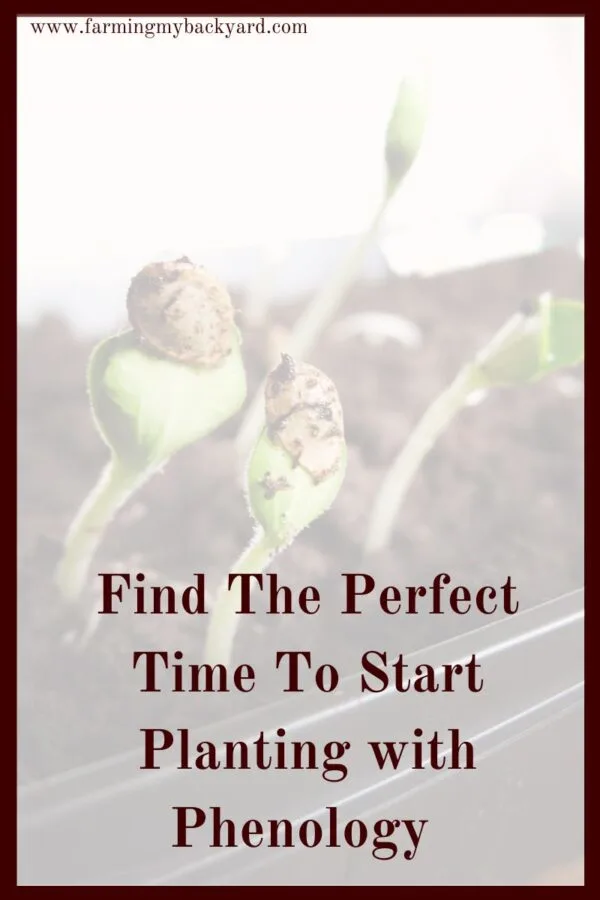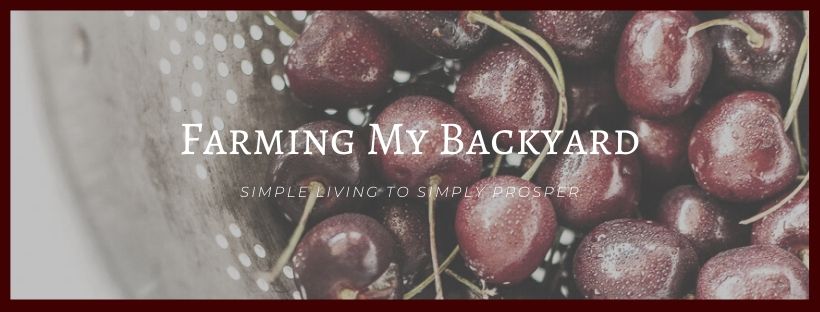One of the important parts of gardening is planting at the right time. If you start your seeds too early they may not grow at all. If you start them too late, they may have problems. Phenology is a great method for making sure you plant at just the right time every year!

What is Phenology?
Phenology is the study of seasonal events and how they relate to plant, animal, and insect life. What this means is instead of planting by the calendar you go by observable natural events.
Related Post: How To Live In Tune With The Seasons
There are some traditional sayings that are based on phenology, such as plant corn when oak leaves are the size of a squirrels ear, or plant potatoes when dandelions bloom. Lilacs are often used as a barometer as well and have been well studied.
You can figure out a phenological record for your own area by keeping careful notes each year. Over several years you will be able to notice relationships such as what plants are blooming around the same time particular pests become an issue in the garden.
Because the weather changes based on your location as well as the individual features of your property, phenological correlations can be a great secret to successful garden timing.
Phenological Correlations You Can Use
Here are some common relationships that have been observed to be successful based on phenology:
- Plant peas when forsythia blooms.
- Plant potatoes, beets, carrots, brassicas, lettuce and spinach when the first dandelion blooms or lilac is in first leaf.
- Plant cold hardy crops when peach and plum trees bloom.
- Plant corn when oak leaves are the size of a squirrel’s ear or when apple blossoms fall.
- Plant bean, cucumber, and squash seeds when lilac is in full bloom.
- Plant tomatoes when lily-of-the-valley or day lilies are in full bloom or flowering dogwood starts to bloom.
- Transplant eggplant, melons, and peppers when irises and day lilies bloom.
- Plant warm season crops when grapevines put out new growth.
- Plant fall cabbage crop when mock orange is in bloom.
- Protect against squash vine borer when chicory flowers open.
- Protect fruit against apple maggots when Canada thistle is in bloom.
- Protect against Mexican bean beetle larvae when foxglove blooms.
- Protect against cabbage root maggots when wild rocket blooms.
- Protect against Japanese beetles when morning glory vines begin to climb.
- Protect against tent caterpillars are hatching when crab apple trees bud.
I haven’t put together a planting schedule for this year, and I can’t remember the frost date without looking them up each time. But my son brought me the first dandelion of spring as I write this. It’s time for me to get planting!
Whether you are paying attention to commonly known seasonal events in your area, or you are making your own record, phenology can help you plant at just the right time for every year in your own garden!
Sources:
Wisconsin Horticulture Extension
Harvest To Table

Want To Raise Happy Chickens?
Subscribe for our newsletter and get the free email course Intro To Backyard Chickens as well as a free printable checklist to walk you through step by step!
